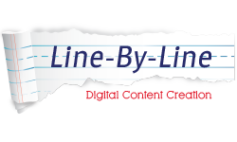A beginning, a middle and an end; a topic sentence, supporting details, and a summary.
Much of what you write contains these components, but there is one important item that is often left out of the content you create.
And when you leave it out, you miss the opportunity to develop a relationship with your audience.
The missing piece is called the call to action.
What is a Call to Action?
A call to action is a statement or invitation that accompanies your content – usually toward the end – that asks your reader to do something.
It’s a request, an offer, a suggestion or an encouragement for your audience to take a certain action. A call to action entices your readers to connect, learn more and engage with you at some point in the future.
Why You Need a Call to Action
A call to action is an opportunity to present more information to your audience, build credibility and establish yourself as a trustworthy expert in your field.
A call to action benefits you because it is a way to identify your target audience. The readers that take you up on your call to action offer are the ones that are interested in what you have to say, would like to learn more, and have found value in the content they’ve read so far.
A call of action is the first step in developing a relationship with your audience, and leading them through the sales cycle.
Types of Calls to Action
Calls to action come in many forms; some are more forward than others. Your ultimate goal is to make more sales, but in order to do that, you have to take the time to prove yourself trustworthy, and develop an ongoing loyalty with your customer. A call to action is your invitation to your customer to begin that relationship.
Here are different types of calls to action you may want to consider adding to your content:
- Sign up for your blog. By simply entering their email address, your audience can receive an email notification of your new blog posts as they are published.
- Opt in to your email list. By signing up, they will receive your email newsletter and other important announcements.
- Leave a comment. Especially for your blog, ask your readers for their thoughts, questions and input on the topic you wrote about. Be sure to acknowledge and respond to all of the comments timely.
- Follow you on social media. Include a link to your Facebook business page, your Twitter account or any other social media profile you have. Be sure to like or follow them back, and respond to any questions or comments they may post on your page.
- Email or call you directly. Perhaps the most personal, including your email or phone number is a great way to invite questions and comments and be accessible.
- Link to your website. Encourage your readers to click on your website link to learn more about you, your business and the products or services you offer.
- Fill out a form. Be sure your form has required fields, such as an email address, so you can respond quickly.
- Download a white paper or ebook. When they enter their email address, you can use it for future correspondence. Content like a white paper or ebook also confirms your credibility as a trusted resource.
- Buy your product or service. This is your ultimate goal, but depending on your business, you may not ask for that right from the start. You might need to take baby steps by starting with the other types of call to action. These let your customer get to know you and trust that you are worthy of their investment of time and money.
Don’t just create great content and leave it hanging. Use your content as a way to connect with those who need what you are offering, develop a relationship and ultimately make more sales.
If you’d like to receive my best advice, please join my mailing list:

